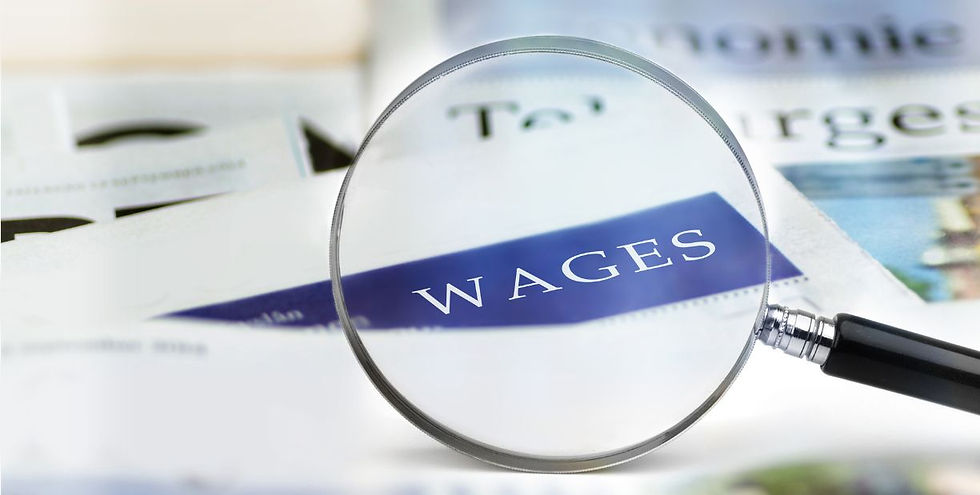An Automatic Stay Provides Immediate Relief
- Kamini Fox

- Mar 17, 2021
- 3 min read

When a person or a business files for bankruptcy protection, an automatic stay is granted. The automatic stay is “automatic” upon the filing of a bankruptcy proceeding and puts a stop on any action by creditors to collect against property of the estate. There is no need to have a court specifically order the stay.
The automatic stay bars any action by creditors to enforce any pre-bankruptcy claims against the debtor. After the Stay is in place, any action taken by the creditors that violates the stay are not legally binding. In fact, a debtor may sue a creditor for continuing to contact them or attempting to begin or continue an action against them after the stay is in place.
Automatic Stay only covers Pre-Bankruptcy Claims
Note the caveat of any “pre-bankruptcy claims.” If a person continues to accumulate new debt after filing for protection, that new debt is not retroactively covered by the stay.
Automatic stays are granted to both individual and businesses and is the same for all chapters of bankruptcy.
In the case of a business bankruptcy, the stay protects the business, but not related non-debtor entities or individuals in the business, including business affiliates, corporate officers, or guarantors.
Automatic Stay Provides Immediate Relief. Creditors Can Be Sued if they Continue to Harass a Debtor
The purpose of the stay is to freeze collection efforts by creditors against the debtor’s assets, and to give the debtor breathing room to formulate a plan that is both beneficial to itself and its creditors. It is easier for a debtor to work out a feasible plan to reorganize itself without the harassment and pressure of creditors if they are not harassed by creditors demanding immediate payment or living under the immediate threat of being removed from their home.
Actions that are stayed include commencement of any proceeding to collect against assets owned by the debtor such as foreclosure actions, eviction proceedings, wage garnishments, perfecting or enforcing a lien against a debtor’s property and attempting to repossess collateral.
There are cases where a creditor can request relief from the stay to proceed to collect against specific property owned by the debtor by showing cause to the Court. In Chapter 7 bankruptcies, it is common for mortgage lenders to request relief from the automatic stay with respect to real property so they may continue with foreclosure proceedings. The request may be granted if it is shown that the debtor is behind on payments and there is not enough equity in the property to cover the amount of the loan. If the debtor can show that there is equity in the property and he or she has the ability to cure the arrears, the request may be denied since lender is adequately protected from financial loss.
Court May Grant Creditors Relief from the Automatic Stay to Proceed with Collection
The court may grant the relief from stay if the property that the creditor is seeking to ascertain is not directly owned by the person or entity that has filed for bankruptcy. For the automatic stay to protect your interest in property, the debtor in bankruptcy have to actually have some type of ownership interest in the property or have some type of possessory interest in the property. For example, if a debtor rents rather than owns property, the landlord may request relief from the stay to proceed with an eviction so they may recover the property and rent the space to a paying tenant.
There are limits to the automatic stay, and not all collection efforts fall under its protection. Certain actions by creditors are not stayed and may continue against the debtor despite the filing of the bankruptcy such as criminal proceedings, proceedings to collect child support, IRS tax deficiencies, and loans from pensions, among others.
There is an Exception to the Automatic Stay
In some cases, the automatic stay does not go into effect at all. For example, the stay terminates after thirty (30) days from the filing of a bankruptcy if the debtor had a prior bankruptcy that was dismissed within one year unless the debtor or a party in interest files a motion showing cause why the stay should continue. If two or more bankruptcy cases were dismissed within the prior year, the stay does not go into effect at all upon the filing of a third bankruptcy.
The automatic stay is one of the driving forces that leads individuals and businesses to file for bankruptcy protection. However, as we have seen, under certain circumstances, the stay either does not protect the debtor at all or provides a mechanism by which creditors can obtain relief from the stay to pursue their collection efforts against property of the debtor.
If you are considering filing for bankruptcy protection, call Kamini Fox to schedule a consultation to discuss your options and to what extent the automatic stay will protect you from creditors.




Comments